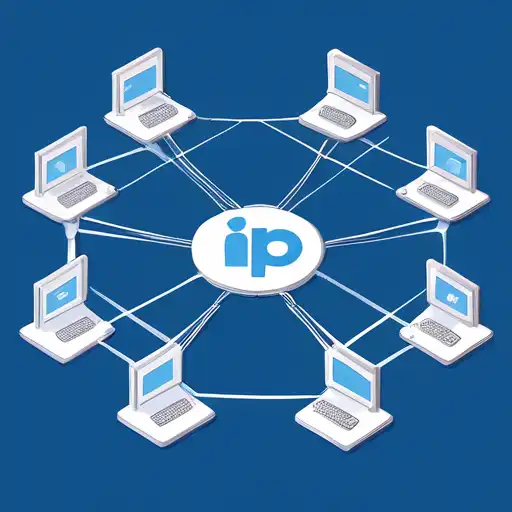Introduction to IP Addresses
In the digital world, IP addresses are as fundamental as street addresses in the physical world. They are unique identifiers assigned to each device connected to a network, enabling them to communicate with each other. This guide will walk you through the basics of IP addresses, their types, and their importance in networking.
What is an IP Address?
An IP (Internet Protocol) address is a numerical label assigned to each device participating in a computer network that uses the Internet Protocol for communication. It serves two main functions: identifying the host or network interface and providing the location of the host in the network.
Types of IP Addresses
There are two main types of IP addresses: IPv4 and IPv6. IPv4 addresses are 32-bit numbers, typically displayed in decimal format (e.g., 192.168.1.1), while IPv6 addresses are 128-bit numbers, displayed in hexadecimal format (e.g., 2001:0db8:85a3:0000:0000:8a2e:0370:7334). The transition to IPv6 is underway due to the exhaustion of IPv4 addresses.
Static vs. Dynamic IP Addresses
IP addresses can also be classified as static or dynamic. A static IP address remains constant, while a dynamic IP address is assigned by a DHCP server and can change over time. Each type has its use cases, with static IPs being ideal for hosting websites and dynamic IPs being sufficient for general browsing.
How IP Addresses Work
When you type a website's URL into your browser, your device uses DNS (Domain Name System) to translate the domain name into an IP address. This IP address is then used to route your request through the internet to the server hosting the website. The server responds by sending the requested data back to your device's IP address.
The Role of IP Addresses in Networking
IP addresses are crucial for the routing of data packets across networks. They ensure that data sent from one device reaches the correct destination device. Without IP addresses, the internet as we know it would not function.
Securing Your IP Address
While IP addresses are essential for internet communication, they can also be exploited by malicious actors. It's important to secure your network by using firewalls, VPNs, and other security measures to protect your IP address from unauthorized access.
Conclusion
Understanding IP addresses is fundamental for anyone looking to grasp the basics of networking. Whether you're setting up a home network or pursuing a career in IT, knowing how IP addresses work will provide a solid foundation for further learning. For more networking basics, check out our guide on Networking Fundamentals.
